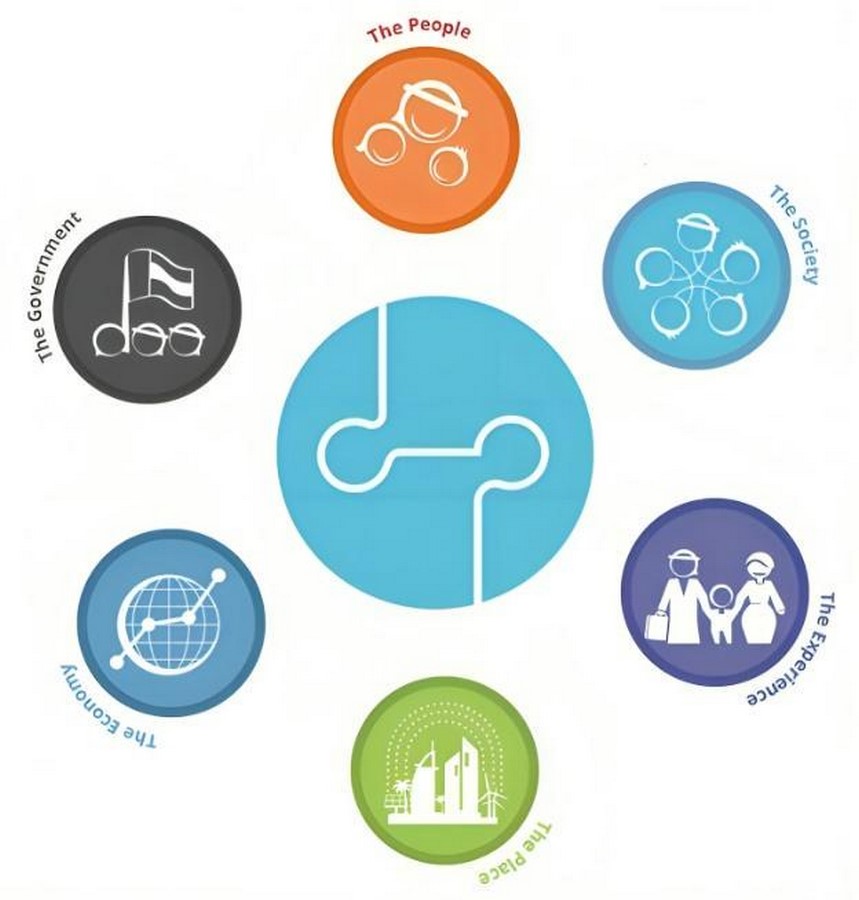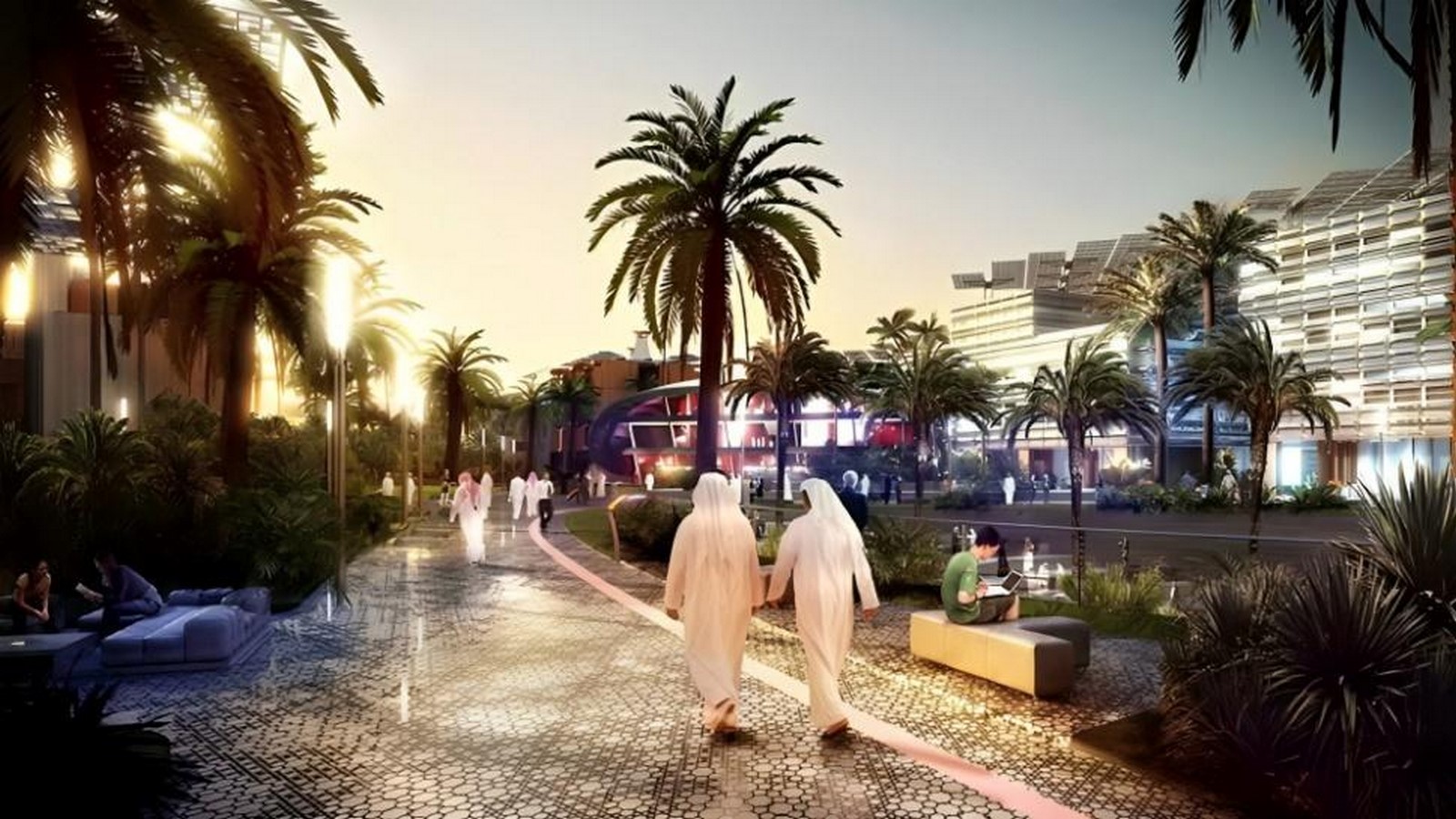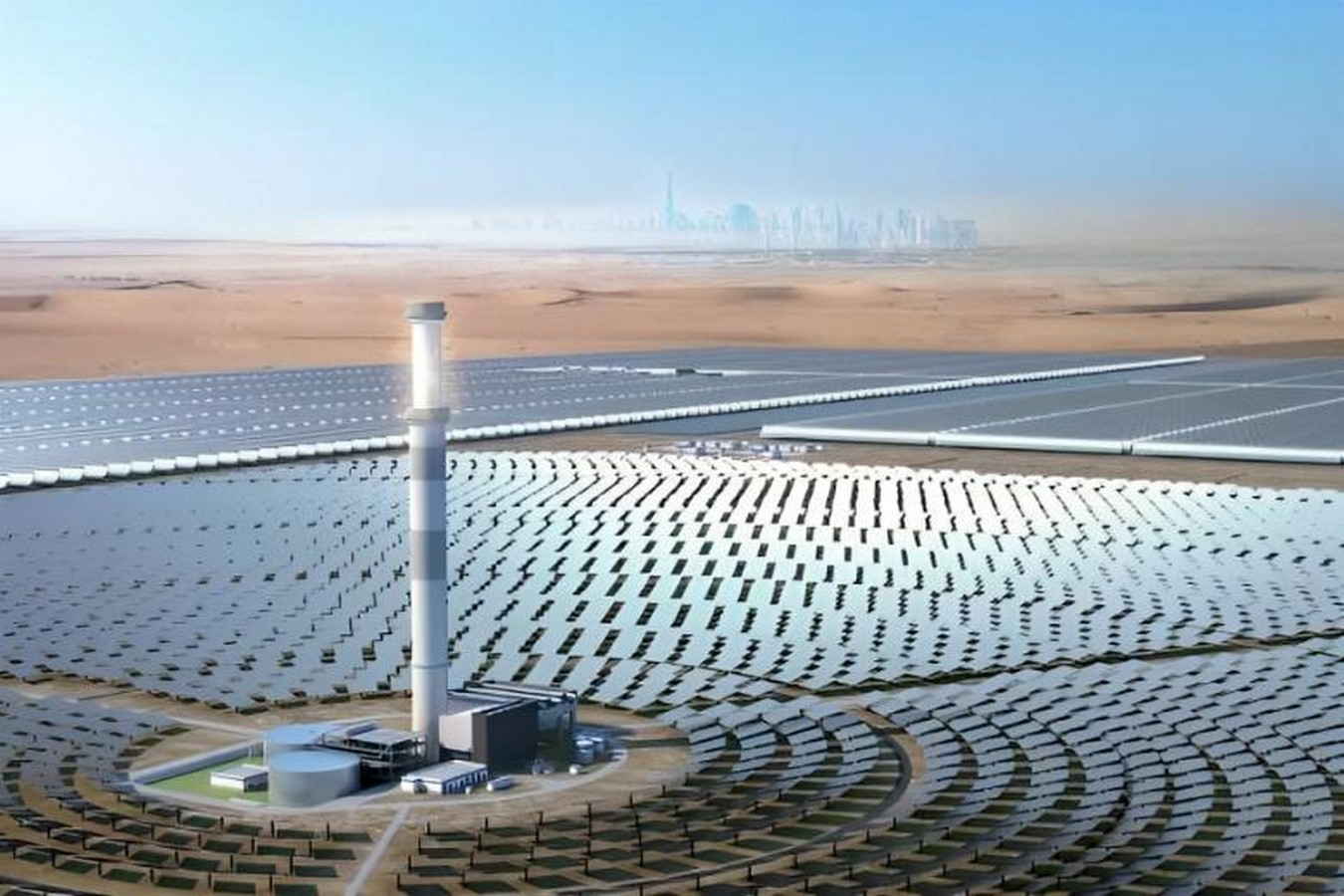Urban development in the United Arab Emirates has rapidly changed over time. UAE is renowned for its architectural wonders like Dubai’s Burj Khalifa and rapid development. As the severity of the climate crisis is increasing day by day, the countries need to incorporate sustainable design principles. To address the pressing issues brought on by climate change, the UAE, a country well-known for its iconic skyscrapers and ambitious urban projects, has adopted sustainable design principles which would find a balance between social, economic, and environmental factors. The goal of this essay is to investigate the difficulties and efforts associated with incorporating sustainable design principles into urban development initiatives throughout the UAE.
Dubai Plan 2021
Dubai Plan 2021 was introduced to illustrate Dubai’s future through a holistic lens starting from the people and society that would shape the city. The plan talks about the city’s urban development, including the built and natural environments, and how these affect people’s lives. Its primary goal is to make Dubai a better destination for travel, residence, and employment. The plan also gives the city’s economy, which fuels its growth, a lot of attention. Finally, it discusses how the government governs the expansion of the city. Each of the six themes that make up these points of view highlights significant goals for Dubai’s vision for the year 2021.The themes include the wellness of people, the society, experience, place, economy and lastly the government.

Urban Planning Vision
When it comes to sustainable urban planning strategies, UAE has made significant progress. This strategy focuses on combining smart city infrastructures with sustainable design and principles. Masdar City in Abu Dhabi, which aims to be the world’s first carbon-neutral city, is one such well-known example. Renewable energy sources are essential to the city’s energy ecosystem. Solar panels are affixed to building facades and roofs to make use of the region’s abundant sunlight. By generating electricity, these solar panels help the city achieve carbon neutrality and significantly reduce its carbon footprint.

As part of its mission to establish Dubai as a global leader in smart cities, the Smart Dubai initiative also seeks to enhance energy efficiency, urban mobility, and connectivity. The use of smart grids and intelligent transport systems reduces energy use and carbon emissions.
Green Building Initiatives
The UAE places a lot of emphasis on green building practises to decrease energy use and enhance quality. Leadership in Energy and Environmental Design (LEED) certification is highly desired for the construction of sustainable buildings. For instance, the Abu Dhabi National Exhibition Centre (ADNEC), which demonstrates the integration of energy-efficient technologies and sustainable materials, received a Platinum LEED certification.
When designing sustainable cities, the UAE gives the use of environmentally friendly building materials top priority. By utilising sustainable wood, green roofs, and recycled materials, the Dubai Sustainable City project lessens the environmental impact of construction. Furthermore, it is preferred to use architectural designs that maximise the use of natural lighting and ventilation while reducing the need for artificial energy use.
Transportation Systems
Sustainable transportation systems are aimed at a better living in UAE where they are promoting Electronic Vehicles (EVs) to reduce the dependency on fossil fuels and would cause less carbon emissions. In support of EVs, Dubai launched the Electric vehicle “Green Charger” initiative. Through this initiative, public charging infrastructure for electronic vehicles was developed and 100 EV green chargers to encourage the use of Electric Vehicles among the public in 2015. Since then, the initiative expanded to over 350 chargers across the city.
Renewable Energy Systems
The UAE’s dedication to renewable energy represents a significant step towards a sustainable and environmentally conscious future. An example of this effort is the Mohammed bin Rashid Al Maktoum Solar Park in Dubai. If the country could generate a massive 5,000 megawatts of renewable energy by the year 2030, its dependence on fossil fuels would be reduced, improving the country’s energy security and resilience. The UAE can ensure a reliable and sustainable energy future by making investments in renewable energy.

Integration of Green Spaces
The emphasis on green spaces is one of the notable efforts in sustainable urban development. The importance of establishing easily accessible parks, gardens, and recreational areas in urban settings has been acknowledged by the UAE. Al Safa Park in Dubai and Umm Al Emarat Park in Abu Dhabi. The development of urban parks and ecological paths is one of the noteworthy initiatives in this regard. These green areas offer residents and visitors a break from the busy urban environment and a chance to reconnect with nature amidst the city’s skyscrapers.

Conclusion
While contributing significantly to Dubai’s Gross Domestic Product (GDP), the construction and real estate industries are among the most resource-intensive sectors. As a result, developing cities like Dubai must plan according to sustainable principles to minimize their negative environmental effects and depletion of natural resources. Cities can strive to be magnets for long-term environmental sustainability by promoting sustainable lifestyles, more environmentally friendly manufacturing, renewable energy, water resource management, decrease in solid waste and sewage treatment, recycling and reuse of materials, sustainable urban design and construction, public wellness, cultural expression, and social responsibility of residents. The UAE’s path to sustainable urban development is marked by admirable efforts and various challenges. Using a multidisciplinary approach, architects, urban planners, policymakers, and the public work together to create cities that are not only aesthetically pleasing but also environmentally conscious and socially inclusive.
Citations:
(No date a) Sustainable Urban Development in the UAE. Available at: https://www.globalurban.org/GUDMag06Vol2Iss1/Al%20Marashi.htm (Accessed: 05 September 2023).
(No date) Dubai Plan 2021. Available at: https://www.dubaiplan2021.ae/ (Accessed: 05 September 2023).
Dubai’s ‘Mohammed bin Rashid Al Maktoum’ 5,000MW Solar Park aims to save 6.5 million tco2e annually (2022) C40 Cities. Available at: https://www.c40.org/case-studies/dubai-s-mohammed-bin-rashid-al-maktoum-5-000mw-solar-park-aims-to-save-6-5-million-tco2e-annually/ (Accessed: 05 September 2023).
Sustainable cities of the UAE: Pioneering the path to a Greener Future (2023a) Sheridan. Available at: https://www.sheridanuae.com/sustainable-cities-of-the-uae-pioneering-the-path-to-a-greener-future/#:~:text=Sustainable%20cities%20in%20the%20UAE,the%20environmental%20footprint%20of%20buildings. (Accessed: 05 September 2023).
Images:
Online Sources
Image 1_Dubai Plan 2021_©www.dubaiplan2021.ae :: Dubai Plan 2021
Image 2_Masdar City_©Gallery – Discover – Masdar City
Image 3_ Mohammed bin rashid al maktoum solar park_©Dubai’s ‘Mohammed Bin Rashid Al Maktoum’ 5,000MW Solar Park Aims to Save 6.5 Million tCO2e Annually – C40 Cities
Image 4_Al Safa Park_©Safa Park Dubai: Ticket Price, How to Reach & More | Dubai City (dubaict.com)















